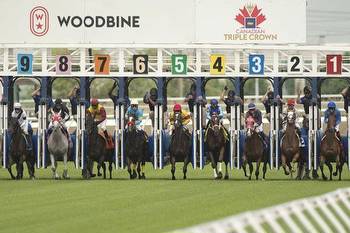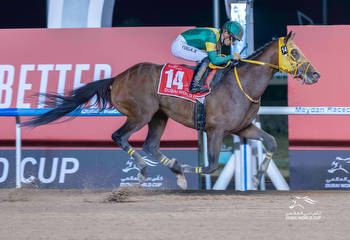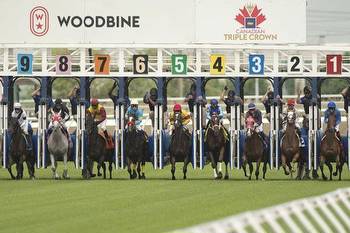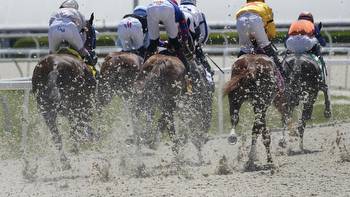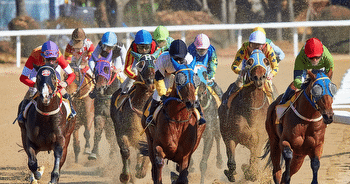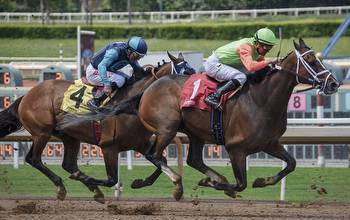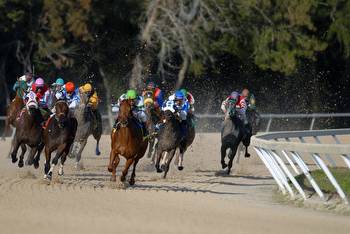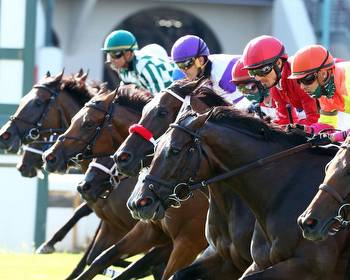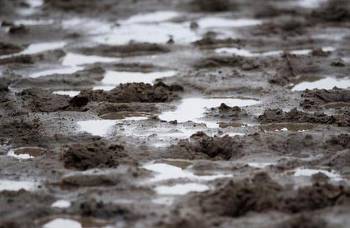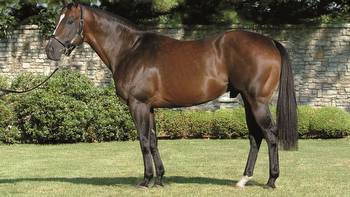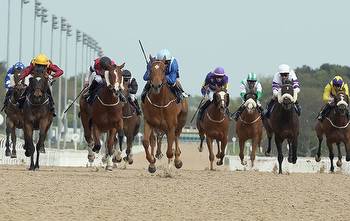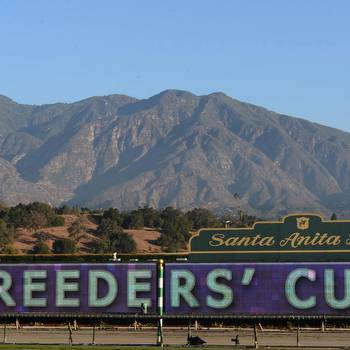The Science of Horse Racing: What is a Turf Hoof?

The goal of handicapping a race, from a six-furlong claimer to the 10-furlong Kentucky Derby (G1), is to find the combinations that minimize risk and maximize success. To that end, bettors have a plethora of information at their fingertips, including discussions of what to look for in the conformation, or physical form, of the horses they are considering. The Science of Horse Racing series aims to take topics like hearing and track surfaces and share the facts about each to help bettors know what to look for the next time.
This month’s edition tackles a topic that I have been interested in since I first heard about it on racing broadcasts: turf hoof versus dirt hoof. Understanding the difference between the two and what that knowledge adds to your toolbox can give you another angle to consider when making your picks.
It’s all in the foot
Like the human foot, the hoof is the foundation of the horse’s movement. About four inches in length, the hoof contains three bones, a network of nerves and blood vessels, and shock-absorbing structures like the spongy frog inside the tough hoof wall. The size and shape of the hoof is as individual as the horse, but, like human feet, can fall into types, indicators of what surface and even distance at which the horse might excel. Horses that will run well on the turf generally will have a hoof that is well suited to that surface as will dirt specialists. To understand what to look for, I turned to racing analyst and horsewoman Maggie Wolfendale for more.
To illustrate the difference, Wolfendale recalled a horse that her father Howard had bought with “massive, dishplate feet and very slack pasterns,” one that he said would really like the turf despite not having much of a pedigree for that surface. Sure enough, once they moved the horse to the grass, he became a stakes winner. “I saw that and the whole notion blossomed from there,” she recalled.
Those wide feet allow the horse to skim over the grass easily, but that same kind of hoof would only “skim the surface and be swimming over the dirt,” rather than digging into the deeper going. On a turf course, horses do not need to dig into to get traction but will grab just enough of the grass to stride more smoothly.
To race over dirt, a horse would need a more compact hoof with more of a heel, Wolfendale shared: “Think of it like if you’re digging in the sand at the beach. Isn’t it easier to have something more compact to dig down into something?” Because dirt requires horses to be able to cut through that top layer and push off the track’s base, the hoof must maintain more of a spade-type shape than the wider turf hoof, which would have a harder time getting traction on that kind of footing.
With the differences between these types of hooves in mind, what should you look for the next time you are at the races?
Building Blocks
When Wolfendale mentions that a horse has one kind of hoof over another on television, she has the benefit of being right there to see them in person. For those whose vantage points are not quite that intimate, how can you tell what type of hoof they have? If you can’t see for yourself, she recommends looking at each horse’s physique: Turf horses “are going to have more of an angular hind-end because turf is a lot more of a firmer surface for horses to be able to push off on,” whereas dirt horses will need more strength in the hind end to be able to accelerate on that kind of track.
Conventional racing wisdom taps synthetic tracks like Tapeta as more like turf than like dirt because of the materials that make up that type of racing surface, but Wolfendale says her experience with that type of surface is not as robust as with dirt and turf. With Belmont Park set to add a synthetic track during its upcoming renovation, that will give bettors even more opportunities to see what type of hoof plays best. For now, though, she recommends relying on conformation as well as pedigree.
Knowing whether or not a horse’s sire produces more turf or dirt runners is a good place to start when handicapping. If a horse is by a stallion like Kitten’s Joy or English Channel, that can help you with your assessment of their potential success on the grass, just as seeing Curlin or Uncle Mo could tip you off to a dirt runner. Yet those are not the only factors to consider: knowledge of conformation for grass runners versus dirt horses complements pedigree and adds more clues to your handicapping notebooks. Looking for hind-end musculature, hoof shape, and even pastern angle are among the cues that handicappers like Wolfendale would recommend when making your selections.
From ears to tail, horses can give racing fans hints about their potential, but those standing trackside or in the paddock watching need to know how to read those clues. Racing analysts like Wolfendale can help you understand what to look for and what that means before you make the next bet. Understanding what to look for in a horse’s conformation can give you a leg up as you prepare another day’s bets.










